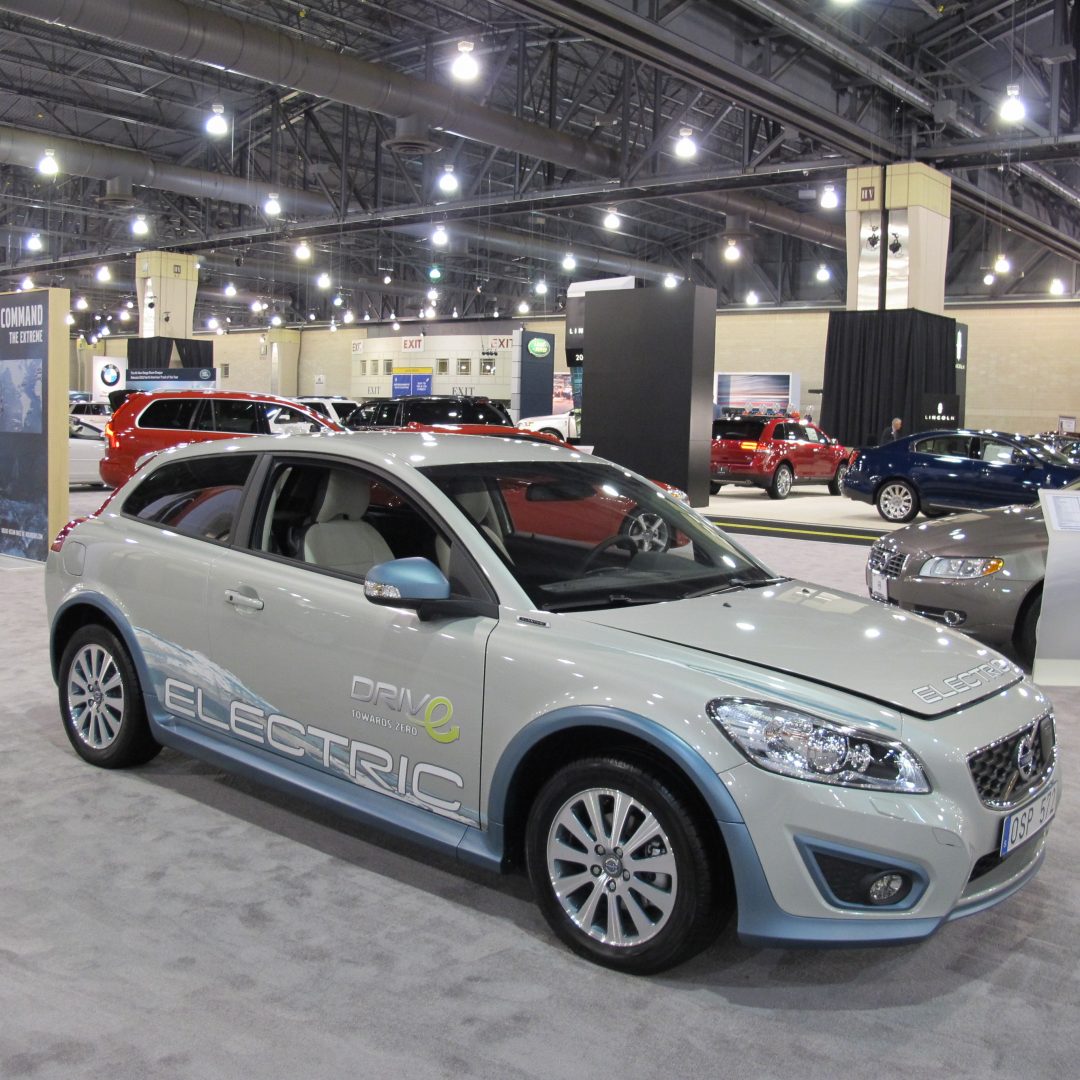
Volvo's new electric car on display at the 2012 Philadelphia Auto Show.
Susan Phillips / StateImpactPA


Volvo's new electric car on display at the 2012 Philadelphia Auto Show.
Susan Phillips / StateImpactPA

Susan Phillips / StateImpactPA
Volvo's new electric car on display at the 2012 Philadelphia Auto Show.

Susan Phillips / StateImpactPA
Volvo’s new electric car on display at the 2012 Philadelphia Auto Show.
It’s hard enough losing your phone charger. But imagine driving a full electric vehicle and running out of juice on a dark, twisting mountain road in say, Sullivan County, where GPS doesn’t work and you have no cell phone signal. It would make you never want to leave your couch.
Is wireless charging for electric vehicles possible? The Department of Energy thinks so. Energy Secretary Steven Chu wants to spend $4 million to help develop wireless charging technologies for cars. The D.O.E announced the competitive grants on Tuesday.
“Wireless charging technology has the potential to significantly increase the attractiveness and convenience of all-electric vehicles to consumers. In the near term, this funding will accelerate the development of wireless charging technology to provide hands-free, automated charging of parked vehicles. Static wireless charging—or wireless charging when the vehicle is parked—can ensure easy and efficient vehicle charging.”
The D.O.E also sees a future where wireless charging could occur when a car is stopped at a traffic light. The department will choose four projects to fund and expects the wireless charging technology to be used within a decade. More funding is planned over the next three years.
Several plug-free charging projects are already in the works. Stanford University announced a breakthrough in wireless charging technology in February, which was covered by Clean Technica.
The power transfer system is based on a technology called magnetic resonance coupling. This technology creates a magnetic field between the road and vehicle to transfer electric currents to the vehicle’s battery. Copper coils, placed under the road surface at regular intervals, are tuned to resonate at the same frequency. When an electric current is introduced, it creates a magnetic field between the coils that can then transfer energy to a receiving coil in passing electric vehicles. Source: Clean Technica (http://s.tt/15y3p)
Qualcomm Halo has also developed a wireless charging device that uses magnetic transference. From PC World:
Halo WEVC consists of two parts: a charging plate that attaches to the bottom of the vehicle, and a charging mat that can be placed on or below the ground. Inductive charging uses magnetism to transfer power, and a Qualcomm representative tells PCWorld that Halo WEVC can transfer up to 3.5 kilowatts of power at greater than 90 percent efficiency–that’s as good as, or even better, than wired charging.
The Department of Energy will announce the grantees sometime this summer.
StateImpact Pennsylvania is a collaboration among WITF, WHYY, and the Allegheny Front. Reporters Reid Frazier, Rachel McDevitt and Susan Phillips cover the commonwealth’s energy economy. Read their reports on this site, and hear them on public radio stations across Pennsylvania.
(listed by story count)
StateImpact Pennsylvania is a collaboration among WITF, WHYY, and the Allegheny Front. Reporters Reid Frazier, Rachel McDevitt and Susan Phillips cover the commonwealth’s energy economy. Read their reports on this site, and hear them on public radio stations across Pennsylvania.
Climate Solutions, a collaboration of news organizations, educational institutions and a theater company, uses engagement, education and storytelling to help central Pennsylvanians toward climate change literacy, resilience and adaptation. Our work will amplify how people are finding solutions to the challenges presented by a warming world.